Feature
Innovation and foresight at Toyohashi Tech: President Yoshiyuki Sakaki implements ambitious plans for the future.
Founded in 1976, Toyohashi University of Technology (Toyohashi Tech) is a vibrant modern institute with research activities reflecting the modern era of advanced electronics and engineering in which it was established.
"We are distinct among national engineering universities in a number of ways," says President Yoshiyuki Sakaki. "Not least because some 80 percent of our 2,200 students come from 5-year technical colleges, with the majority continuing on to graduate school."
Toyohashi Tech Toyohashi Tech has devised a spiral-up curriculum to suit the need of its undergraduate and graduate students as they progress in their studies and research. "Certainly basic theory is important, but we also emphasize practical training, an important part of which is a two-month internship we organize with companies both in Japan and overseas" says Sakaki. "Many of our 250 teaching staff are from industry and we encourage them and our students to maintain close relationships with industry."
Approximately 10 percent of Toyohashi Tech students are from abroad, especially Asia. This reflects the success of the university's overseas outreach programs, especially its International Center for Engineering Education Development (ICCEED) program set up in 2001 to promote international student exchange.
"Concerning ICCEED, we're working with the Japanese government in several ways to develop education in Indonesia, Malaysia and Vietnam," says Sakaki. "Some overseas students from this program who graduate from our University go on to work in local manufacturing companies like Toyota, Hitachi and Toshiba, which are well known and representative Japanese companies."
Toyohashi Tech has eight research centers focusing on fields such as intelligent sensing, robotics, agrotechnology and photonic information memory. In October the university completed the construction of the Electronics-Inspired Interdisciplinary Research Institute (EIIRIS) that takes a new approach to research.
"The aim of EIIRIS is to produce world-class innovative research," says Sakaki. "To do this we are bringing together ambitious young researchers from diverse fields to collaborate on pioneering new frontiers in science such as brain/neuro-electronics as well as tackling some of the major issues mankind faces today: issues such as environmental changes and aging societies."
As well as literally working alongside each other in the same new dedicated building (Fig.2), these researchers will also collaborate with the well established research institutes at the University and use the facilities at the LSI fabrication facility connected to the new building, forming a huge research complex.
President Sakaki's background is in the field of molecular biology and he was the leader of Japan's International Human Genome Project. He is a native of nearby Nagoya, the center of the country's third largest region after Tokyo and Osaka. Toyohashi itself is a fair-sized city of about 380,000. The Pacific Ocean is only a short bicycle ride away from the Toyohashi Tech campus, and with the spectacular sights of the surrounding mountains, Toyohashi has a mild climate and is within easy reach of Tokyo, Osaka, Kyoto and Kobe by Shinkansen.
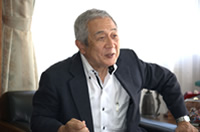
President Yoshiyuki Sakaki
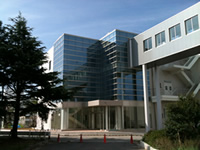
Fig.2: The new Electronics-Inspired Interdisciplinary Research Institute (EIIRIS)
EIIRIS spells a unique approach to interdisciplinary research
Plans are well under way to turn Toyohashi University of Technology (Toyohashi Tech) into a world-leading center for innovative interdisciplinary research based on its internationally acknowledged research on electronic devices.
"At the center of this bold initiative is the newly completed Electronics-Inspired Interdisciplinary Research Institute (EIIRIS)," explains Makoto Ishida, Toyohashi Tech's vice president for research affairs and director of EIIRIS (Fig.1).
The new institute houses an international team of ten young researchers with diverse backgrounds including the neuroscience, biotechnology, magnetism, robotics, and nanoelectronics. A key member of EIIRIS is chief scientist Adarsh Sandhu—a bilingual physicist from the U.K. whose research is focused on nano-bio-magnetics, and with 25 years of industrial and academic experience in Japan.
Ishida envisages that the unique environment at EIIRIS will be conducive to producing new innovative concept and technologies ranging from biochips to environmental sensing devices aimed at tackling some of the important challenges facing society and the environment in the 21st Century.
The University already has as strong research base to build on. It was recently selected by the Japanese government to become one of the country's prestigious Global Centers of Excellence (G-COE) and conduct a research program called Frontiers of Intelligence Sensing.
"Being chosen as a G-COE is recognition for eight years of research our team has spent developing advanced intelligent sensor technology," says Ishida, who heads the program. "One outstanding result is the 'Toyohashi Probe', an array of perpendicular nano-wires grown on a silicon chip that can be used as a brain-machine interface (Fig.2). Now our Intelligent Sensing Systems Center will work with members of EIIRIS to design and develop new kinds of sensors."
Two other electronics-based centers, the advanced LSI Research Facilities and the Research Center for Advanced Photonic Information Memories, will also work closely with EIIRIS, as will the centers focused on green technology. In addition, researchers from other Toyohashi Tech centers, including robotics and physical health will also join in the interdisciplinary effort.
As well as perusing their collaborative research projects, the EIIRIS researchers will also be expected to nurture the research abilities of graduate student assistants assigned to the Institute, explains vice president Yasuyoshi Inagaki, in charge of the Tenure Track Program at the University. "Then later, the researchers will teach Toyohashi Tech students courses based on their own fields of expertise, in preparation for possible tenured positions."
"Our approach to offering tenured positions has been dubbed the Tenure Track," says Inagaki. "Upon completion of five years of research, a screening committee will assess the researchers' work and associated activities, and those achieving particularly excellent results will be appointed tenured faculty."
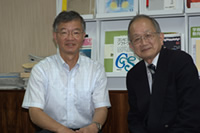
Toyohashi Tech vice presidents, Makoto Ishida (left) and Yasuyoshi Inagaki.
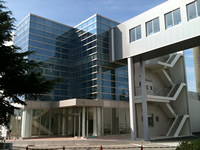
Fig.1: The new EIIRIS building.
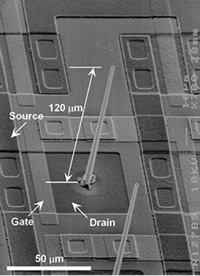
Fig.2: The 'Toyohashi Probe' consisting of an array of nano-wires integrated into an LSI silicon chip, for use as a brain-machine interface.


